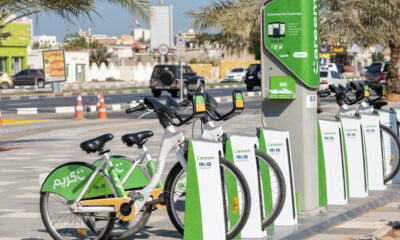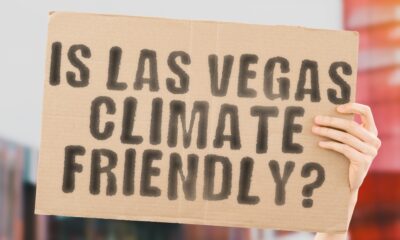

Economy
Sustainable holiday destinations: Galapagos Islands
The Galapagos Islands are an adored tropical paradise in the Pacific Ocean. Their survival lays inevitably in their ability to conserve the local ecosystem through strict controls of movement and responsible tourism.
Officially known as the Archipelago de Colon, the islands are located 500 miles west of Ecuador. To this day, the chain of 13 main and three smaller islands remain a volcanic hotspot. Capital city Puerto Baquerizo Moreno lies on the southern tip of San Cristobal Island, the easternmost island of the province of Galapagos.
The Galapagos Islands are an internationally recognised world heritage site, with 97% of the area that covers the islands designated a national park. The islands are surrounded by one of the largest marine reserves in the world, the Galapagos Marine Reserve. Visitors are able to dive and snorkel with rare underwater species in particular areas of the marine reserve like Tortuga Bay, situated on Santa Cruz island.
For a spectacular view of the wildlife in the Galapogas, head over to the Pinnacle Rock Overlook on Bartolome Island. Another popular spot includes Puerto Ayora on Santa Cruz Island. A visit to the Charles Darwin Research Station in Puerto Ayora will give you an opportunity to learn about conservation projects throughout the islands. Tortuga Bay is also nearby. There, you can take a stroll along the main walking path, where you will encounter some extraordinary marine wildlife.
Galapagos Conservancy (GC) is a US organisation focused on securing the long-term protection of the Galapagos archipelago ecosystems. It offers practical advice on how to conserve natural resources when travelling to the islands. Tourists visiting are recommended to use accredited, licensed tour companies and guides, in addition to seeking out reputable hotels for their stay. Responsible tour operators that embed environmental conservation into their core operations can be accessed through various networks, for example the International Galapagos Tour Operators of America (IGTOA).
Strict regulations, restricted sites for visiting groups, and monitoring and evaluation of tourism across the region may be the only necessary tactics to release the strain on these sensitive settings. Visitors must be prepared to plan their itineraries well in advance.
Tailor-made holidays with travel specialists such as Audley Travel, an award-winning five star responsible tour operator, can help you plan your time spent on the islands and limit the impact of your travels on the natural biosphere.
WWF and the Galapagos National Park have been able to develop a solar-powered boat for the islands. Solar power technology for commercial boats could reduce costs and carbon consumption from fossil fuels, and find the right balance between human and marine activity.
In 2001 a fuel tanker ran aground off the Galapagos Islands. It began leaking fuel (both oil and diesel), causing massive environmental destruction in its wake, and killing up to 62% of the marine iguana population on one island.
Overdevelopment on the islands could be incredibly detrimental to maintaining the archipelago’s alluring beauty. However, stringent regulations and regular monitoring of the landscape will make it less susceptible to environmental damage, retain the essence of the region and balance the needs of its local people and the ecology.
Further reading:
Sustainable holiday destinations: Fjords, Norway
Sustainable holiday destinations: Belize
Sustainable holiday destinations: Alaska
Sustainable holiday destinations: Kenya
Sustainable holiday destinations: Blue Mountains, New South Wales


 Environment10 months ago
Environment10 months agoAre Polymer Banknotes: an Eco-Friendly Trend or a Groundswell?

 Environment12 months ago
Environment12 months agoEco-Friendly Home Improvements: Top 7 Upgrades for 2025

 Features9 months ago
Features9 months agoEco-Friendly Cryptocurrencies: Sustainable Investment Choices

 Features10 months ago
Features10 months agoEco-Friendly Crypto Traders Must Find the Right Exchange





























